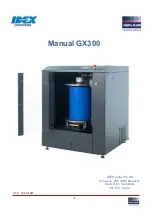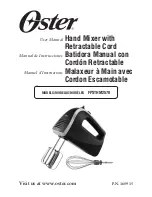
77-2985-R0.5
29/38
EN
10.7: Linear Potentiometer Replacement
The linear potentiometer is a permanent part of the linear pot bracket assembly. If the linear
potentiometer becomes worn or damaged, the pot/bracket assembly should be replaced.
1. Be sure that the system is fully depressurized before working on it by following the
3.2: System
Depressurization Procedure as described in 77-2984 Operations Guide.
Also disconnect from
power and place the AC lockout switch in the off position. Open the electrical enclosure door to
access the potentiometer bracket and associated wiring.
2. Remove the potentiometer wire leads from their terminals on the control main board. Make note of
the terminal locations or refer to the electrical schematic to re-install the leads of the new
potentiometer.
3. Inside the enclosure, remove the two screws from the potentiometer bracket so that it may be
removed from the motor mount.
4. Remove the potentiometer bracket assembly and discard if worn or damaged.
5. Use medium strength thread locker on the screws to re-attach the potentiometer bracket to the
motor base. Re-attach the wire leads to the proper terminals. Route wiring back through the wire
trays.
Stepper Motor
Stepper operation causes an inner nut to rotate, resulting in linear motion of the dispense pump.
The threaded shaft should be lubricated periodically with a small amount of Dupont Krytox GPL 206
to prevent shaft and nut wear.
The position sensor and potentiometer bracket must be removed to
replace the stepper motor. The stepper motor may be removed by removing its bolts and
disconnecting from pump fluid end. Motor and lead screw are sold as a matched pair.
Dispense Pump Seal
The Dispense Pump is equipped with an oil barrier between the dispense top seal and the outside
air. The barrier is contained between the upper and lowers seals in the top block. The oil reservoirs
should be filled with seal lubricant or a compatible solvent. This prevents hardening of any material
which may seep past the rod seal and keeps the pump rod from running “dry”. Appearance of
catalyst or hardener in the reservoirs is an indication of worn rod seals. Use 240-3170-200 pump
repair kit as needed.
The seal lubricant may be flushed and re-filled by turning one of the tubes toward the ground then
re-filling the tubes and reservoir from the upright tube. When enough lubricant has been added, turn
the downward facing tube upright and top off fluid of both.
To prevent damage to the strip, do not tighten the ball roller that is part of the potentiometer wiper
assembly. It has already been tightened as needed from the factory.
A new potentiometer strip requires reset of the upper and lower pump limits. See section 10.8.
CAUTION:
Summary of Contents for GEMS
Page 16: ...16 38 77 2985 R0 5 EN 6 Color Stack 5 Color 240 3230 5 Thread Sealant ...
Page 22: ...22 38 77 2985 R0 5 EN ...
Page 31: ...77 2985 R0 5 31 38 EN 17 1 Electrical Diagrams ...
Page 32: ...32 38 77 2985 R0 5 EN ...
Page 33: ...77 2985 R0 5 33 38 EN ...
Page 34: ...34 38 77 2985 R0 5 EN ...
Page 35: ...77 2985 R0 5 35 38 EN ...










































